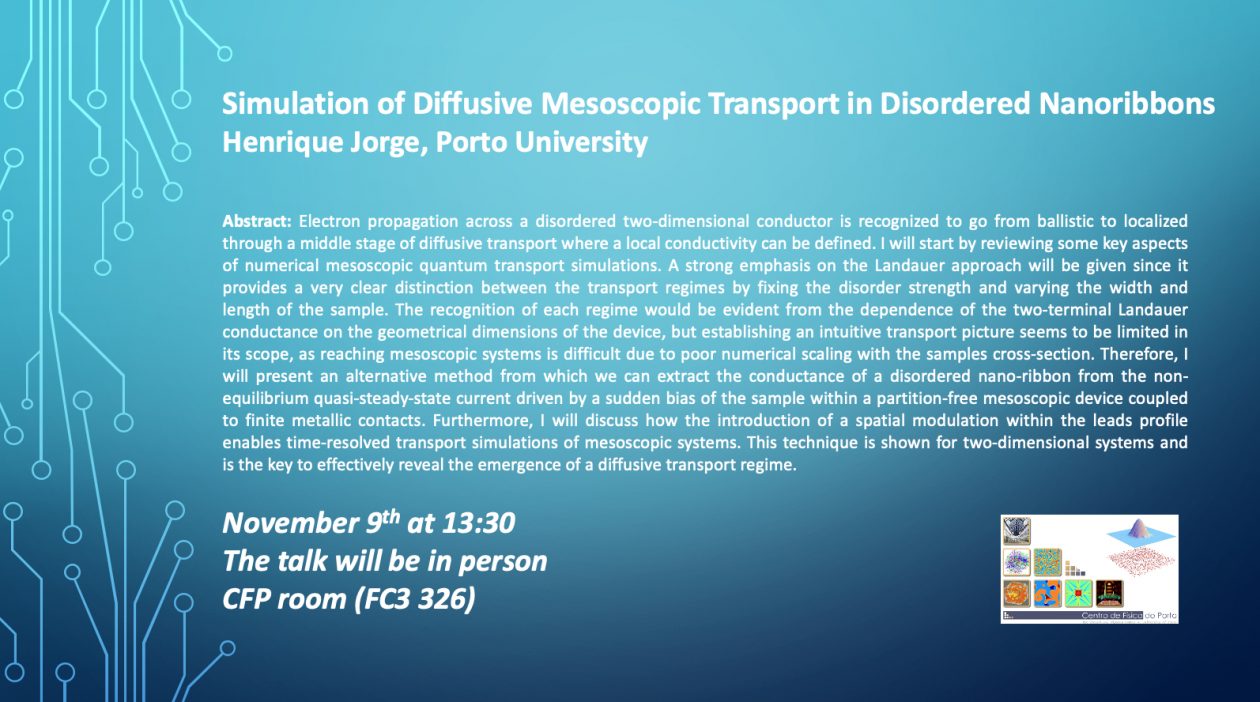
Abstract: Electron propagation across a disordered two-dimensional conductor isrecognized to go from ballistic to localized through a middle stage of diffusive transport where a local conductivity can be defined. I will start by reviewing some key aspects of numerical mesoscopic quantum transport simulations. A strong emphasis on the Landauer approach will be given since it provides a very clear distinction between the transport regimes by fixing the disorder strength and varying the width and length of the sample. The recognition of each regime would be evident from the dependence of the two-terminal Landauer conductance on the geometrical dimensions of the device, but establishing an intuitive transport picture seems to be limited in its scope, as reaching mesoscopic systems is difficult due to poor numerical scaling with the samples cross-section. Therefore, I will present an alternative method from which we can extract the conductance of a disordered nano-ribbon from the non-equilibrium quasi-steady-state current driven by a sudden bias of the sample within a partition-free mesoscopic device coupled to finite metallic contacts. Furthermore, I will discuss how the introduction of a spatial modulation within the leads profile enables time-resolved transport simulations of mesoscopic systems. This technique is shown for two-dimensional systems and is the key to effectively reveal the emergence of a diffusive transport regime.
Henrique Jorge, Porto University
November 9th at 13:30
The talk will be in person, in the CFP room (FC3 326).